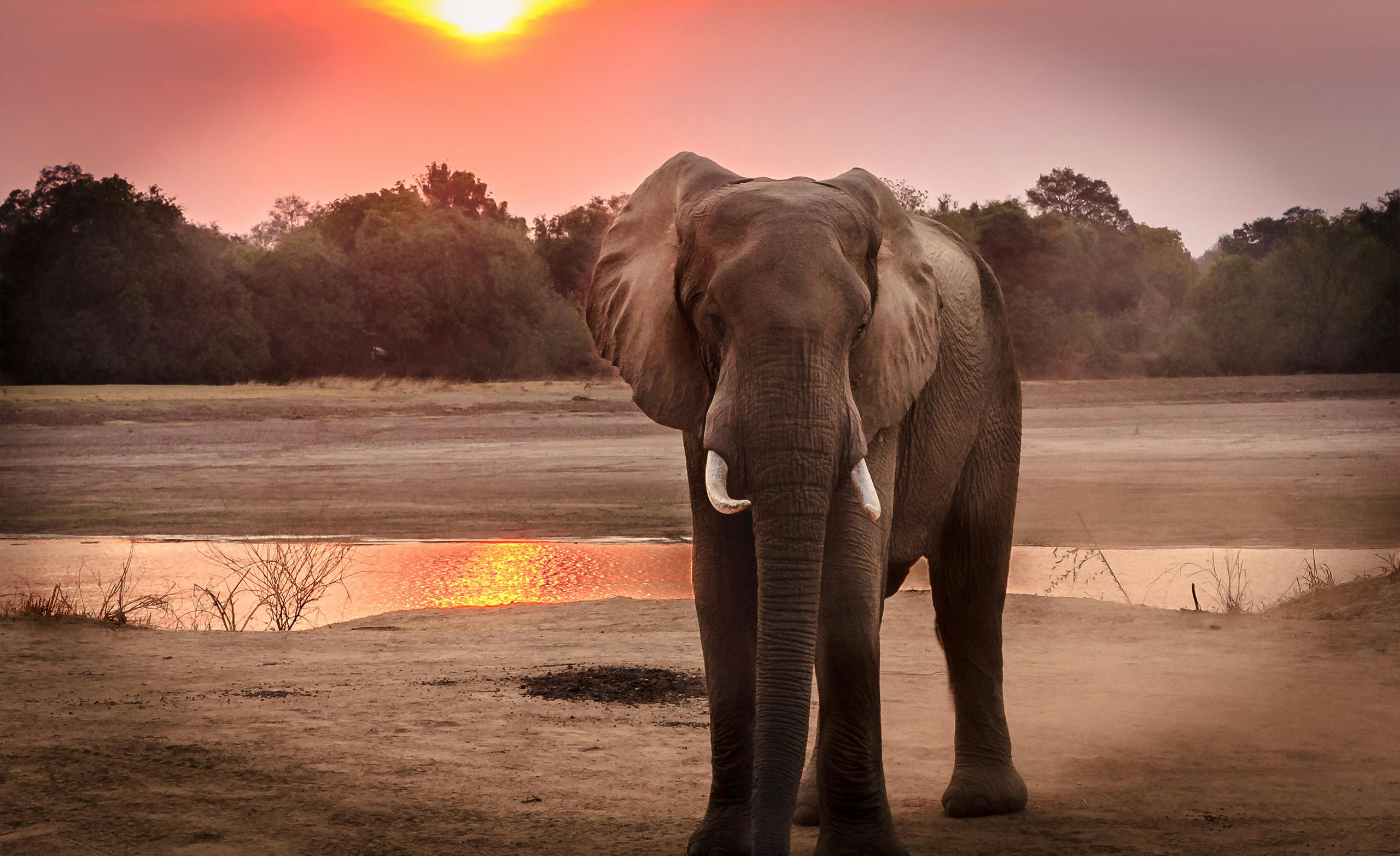
African Elephants Conservation: From Crisis to Triumph
The world is facing a compelling need to address the silent crisis of African elephants conservation. Once abundant across the continent, African elephants—both savanna and forest species—are now on the precipice of losing the battle for survival. Iconic symbols of strength and majesty, they also serve as keystone species, playing vital ecological roles in their habitats. Yet, their numbers have plummeted alarmingly over the last decades due to poaching, habitat loss, and the growing human-wildlife conflict.
In this blog, we will explore the crisis in detail, the threats to African elephants, and the urgent steps needed to save them. This tragic decline is heart-breaking, but it is also a rallying cry for immediate, collective action.
Table of Contents
The Silent Crisis of African Elephants Conservation
Why African Elephants Matter?
African elephants are essential to biodiversity, maintaining and shaping ecosystems by clearing vegetation, dispersing seeds, and creating water sources during dry seasons. These animals are also cultural icons, revered in folklore and celebrated in tourism, significantly contributing to Africa’s economies. However, despite their critical importance, African elephants conservation faces steep challenges. Their populations are dwindling, with only around 415,000 elephants (both savanna and forest species) believed to remain in the wild—a stark contrast to the millions that roamed Africa centuries ago.
Numbers That Speak Aloud
The statistics underscore the urgent need for robust African elephants conservation measures. Over the last ten years, more than 144,000 savanna elephants have been lost, primarily due to poaching. Forest elephants, a critically endangered species, have fared worse, with their populations declining by a staggering 86% in the past three decades. This scale of decline is unprecedented and paints a troubling picture of their future.
Major Threats to African Elephants Conservation
Poaching and the Ivory Trade
Poaching has been the greatest driver of African elephant population declines. Despite international bans and growing awareness of the illegal wildlife trade, the lucrative ivory market remains persistent. Smuggling routes in Africa have become more sophisticated, often involving transnational crime syndicates, which exploit weak enforcement and inadequate policing. Every year, approximately 20,000 elephants are killed for ivory—a chilling metric that underscores the ongoing assault on these majestic animals.
Habitat Loss and Fragmentation
Alongside poaching, habitat loss poses another monumental threat to African elephants conservation. As Africa’s human population surges, encroachment into elephant habitats increases significantly. Forests are cleared for agriculture, settlements, and infrastructure, sharply reducing the spaces where elephants can thrive. Migration corridors are blocked, and ecosystems are fragmented, making it harder for elephants to find sufficient food and water or interact with other herds. Without immediate action, habitat degradation will render large swathes of formerly elephant-dense landscapes uninhabitable for them.
Human-Elephant Conflicts
Human-wildlife conflict is an unfortunate consequence of shrinking elephant habitats. As elephants venture into human settlements due to limited resources, they often destroy crops or infrastructure, leading to retaliation from local communities. Fatal encounters on both sides escalate tensions, making African elephants conservation a contentious issue in regions where human livelihoods are at stake.
Conservation Strategies: Reversing the Decline
Anti-Poaching Measures
To combat poaching, organizations are employing cutting-edge technologies such as drone surveillance, camera traps, and GPS-tracking collars to monitor elephant populations and thwart illegal activities. Strict enforcement of laws targeting poachers and illegal ivory markets is crucial. International cooperation to dismantle smuggling networks is equally critical to successful African elephants conservation.
Habitat Protection and Restoration
Securing and expanding elephant habitats remains a high priority for conservationists. Governments, NGOs, and local communities are working to establish wildlife corridors that reconnect fragmented ecosystems. Habitat restoration projects aim to reverse decades of environmental destruction, providing elephants with the vital resources they need to thrive.
Community Participation in Conservation
Empowering local communities is integral to long-term African elephants conservation. By involving people living near elephant ranges, conservation organizations can shift perceptions from conflict to coexistence. Initiatives such as community-based conservancies, tourism revenue-sharing models, and education campaigns can help improve livelihoods while protecting elephants.
Highlighting the Role of Global Efforts in African Elephants Conservation
International Cooperation
Conservation of African elephants requires global collaboration. International treaties like CITES (Convention on International Trade in Endangered Species of Wild Fauna and Flora) play a pivotal role in regulating ivory sales and imposing trade bans. Countries must remain committed to these agreements while working collectively to strengthen enforcement.
Funding Conservation Initiatives
A major challenge facing African elephants’ conservation is the lack of sustainable funding. Robust financial support from governments, private donors, and international conservation organizations is needed to scale up efforts to combat poaching and protect habitats. Platforms like the Great Elephant Census provide invaluable data to allocate resources effectively.
Success Stories in African Elephants Conservation
Despite the grim statistics, success stories in African elephants conservation offer hope:
- Botswana has emerged as a conservation powerhouse with the largest population of elephants in Africa. Its anti-poaching policies and community-based tourism initiatives have garnered global acclaim.
- In Kenya, elephant populations are rising thanks to stricter law enforcement and community-led efforts.
- Cross-border initiatives, like those in the Kavango-Zambezi Transfrontier Conservation Area (KAZA), allow herds to roam freely across countries, preserving critical migration routes.
These examples demonstrate that with the right strategies, recovery is possible.
The Way Forward: Call to Action
To avert the loss of one of Earth’s most iconic species, the world must rally around the cause of African elephants’ conservation:
- Donate to Conservation Organizations: Support NGOs like the African Wildlife Foundation or Save the Elephants, which are at the forefront of conservation efforts.
- Raise Awareness: Spread the message about the plight of elephants and the importance of ending illegal wildlife trade.
- Sustainable Tourism: Engage in ethical tourism that prioritizes wildlife conservation.
- Advocate for Stronger Policies: Push governments to strengthen anti-poaching laws and implement large-scale habitat protection plans.
Conclusion
The crisis facing African elephants transcends the boundaries of continents and nations. The fight for African elephants conservation is a global responsibility, as it holds the key to sustaining entire ecosystems, securing biodiversity, and honoring the cultural heritage tied to these animals. With steady dedication to anti-poaching efforts, habitat preservation, community engagement, and international cooperation, it is possible to reverse the tide of decline.
The journey toward saving African elephants is daunting, but it’s one we can embark on with collective resolve. Let us act now, before the silent crisis turns into a deafening loss of one of nature’s most majestic creatures. Through unified action, we can ensure that future generations look upon the African elephant not as a relic of the past, but as a thriving symbol of conservation success.
